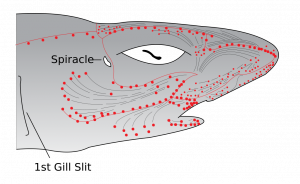 If you dive at all, you’ll know that one of the most frustrating hurdles to toss yourself over might just be getting close enough to all the diverse wildlife for long enough to actually get more than a swift flash of a tail and stream of bubbles. Well now, there may be a solution for you to creep up on the fauna of the deep completely unbeknownst to them thanks to a bit of technology called “HECS Stealthscreen”. Carbon fiber mesh is woven directly into a dive suit, acting as a Faraday Cage and blocking the body’s electrical signal underwater, not unlike a microwave door.
If you dive at all, you’ll know that one of the most frustrating hurdles to toss yourself over might just be getting close enough to all the diverse wildlife for long enough to actually get more than a swift flash of a tail and stream of bubbles. Well now, there may be a solution for you to creep up on the fauna of the deep completely unbeknownst to them thanks to a bit of technology called “HECS Stealthscreen”. Carbon fiber mesh is woven directly into a dive suit, acting as a Faraday Cage and blocking the body’s electrical signal underwater, not unlike a microwave door.
 Many ocean dwelling creatures possess a bit of a ‘sixth sense’ – special organs called “electroreceptors” which are, well, pretty much exactly what they sound like. Sharks, rays, dolphins and various fish with this ability can sense natural electrical stimuli within their environment. This means with every twitch, blink and heartbeat, you’re emitting detectable energy to these species, essentially blowing your cover and thwarting any element of subtlety.
Many ocean dwelling creatures possess a bit of a ‘sixth sense’ – special organs called “electroreceptors” which are, well, pretty much exactly what they sound like. Sharks, rays, dolphins and various fish with this ability can sense natural electrical stimuli within their environment. This means with every twitch, blink and heartbeat, you’re emitting detectable energy to these species, essentially blowing your cover and thwarting any element of subtlety.
Thanks to HECS, these signals become virtually undetectable, allowing you to sneak up on your favorite marine species. The dive suits are a bit steep, averaging around $600 and upwards of there, but well worth the investment for avid divers, underwater photographers and videographers, researchers and scientists alike. The carbon fiber is lightweight and flexible, so no added bulk or stiffness in the suit.
Californiadiver.com met with HECS co-inventor Mike Slinkard and HECS Vice President of Marketing, Lachlan McPherson, at the annual DEMA show in Las Vegas this year, where they went into further detail on how the suits work.
Sweet! So now you can scare the bejesus out of unsuspecting fish (kidding, though it has to freak them out just a tad).









0 Comments